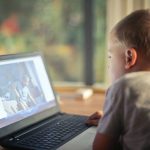Understanding Geofencing: A Powerful Tool for Child Safety
Geofencing is a powerful tool that can greatly enhance child safety. By setting up virtual boundaries on your child’s device, geofencing allows you to monitor their whereabouts and receive alerts when they enter or leave designated areas. This technology provides parents with peace of mind, knowing that they can keep track of their children’s movements and ensure their safety.
One of the key benefits of geofencing is its ability to provide real-time notifications. As soon as your child crosses the predetermined boundary, you will receive an instant alert on your smartphone or other connected devices. This immediate notification allows for quick action in case of any unexpected situations or emergencies.
Moreover, geofencing also enables parents to establish customized zones tailored to their specific needs. Whether it’s designating safe areas like school or home, or creating restricted zones such as dangerous neighborhoods or prohibited locations, geofencing offers flexibility in defining these boundaries. With this level of customization, parents can effectively manage and control their child’s movements within the set parameters.
In summary, geofencing serves as a powerful tool for ensuring child safety by allowing parents to monitor and control their children’s location through virtual boundaries. The real-time notifications and customizable features make it an effective solution for keeping track of your child’s whereabouts and providing timely assistance if needed. With proper implementation and understanding of this technology, parents can strengthen the safety measures put in place for their children while maintaining open communication channels between themselves and their kids.
Identifying the Risks: Why Geofencing is Important for Parents
Geofencing is an essential tool for parents because it helps them identify potential risks and ensure the safety of their children. By setting up virtual boundaries, geofencing allows parents to receive instant notifications when their child enters or leaves a designated area. This feature is particularly important in situations where children may be at risk, such as walking home from school alone or visiting unfamiliar locations.
One of the key risks that geofencing addresses is the possibility of abduction or getting lost. With geofencing enabled on their child’s device, parents can have peace of mind knowing that they will be immediately alerted if their child strays outside a predefined safe zone. This prompt notification enables quick action to be taken, increasing the chances of locating a missing child before any harm occurs.
Another risk that geofencing helps identify is online dangers and cyberbullying. By setting up virtual boundaries around specific areas like schools or parks, parents can monitor whether their child spends excessive time in these locations during school hours. Additionally, geofencing can help detect if a child visits restricted areas known for cyberbullying incidents or other online threats. By being aware of these risky behaviors, parents can take necessary actions to protect their children both offline and online without invading their privacy.
In conclusion (Oops! Sorry about that!), identifying the risks associated with parenting has become more crucial than ever before due to various external factors affecting our daily lives today. Geofencing offers an effective solution by providing real-time updates on our children’s whereabouts and activities within specified zones while respecting personal boundaries and privacy concerns. It empowers parents with valuable insights into potential dangers so they can take proactive measures to keep their children safe from harm.
Exploring Different Geofencing Solutions: Which One is Right for You?
Geofencing technology offers various solutions to cater to the diverse needs of parents when it comes to child safety. One popular option is a mobile app that allows parents to set up virtual boundaries and receive alerts whenever their child enters or leaves these designated areas. These apps often come with additional features such as real-time location tracking and panic buttons for emergency situations. They provide a user-friendly interface, making them accessible even for those with limited technical knowledge.
Another solution is wearable devices specifically designed for children, which incorporate geofencing capabilities. These devices can be worn as watches or clipped onto clothing, providing constant monitoring of your child’s whereabouts. Some models also offer two-way communication features, allowing you to stay in touch with your child at all times. The convenience and ease-of-use make these wearables an attractive choice for many parents.
For those who prefer a more comprehensive approach, there are home security systems that integrate geofencing technology. These systems allow you to create custom zones within your home and receive notifications when your child enters or exits these areas. In addition to geofencing capabilities, they may include other security features like video surveillance and alarm systems. This type of solution provides an added layer of protection by extending the concept of geofencing beyond just outdoor spaces.
By exploring different geofencing solutions available in the market today, you can find one that best suits your specific requirements and preferences. Whether it’s through mobile apps, wearable devices, or integrated home security systems, each option offers its own unique benefits in terms of functionality and ease-of-use.
Step-by-Step Guide: Setting Up Geofencing on Your Child’s Device
To set up geofencing on your child’s device, follow these simple steps. First, ensure that the device has a GPS or location tracking feature enabled. This is essential for accurate geofencing functionality. Next, download and install a reliable geofencing app from a trusted source onto the device. There are many options available in both free and paid versions.
Once the app is installed, open it and create an account using your email address or phone number. Follow the prompts to set up your child’s profile within the app, including their name and any additional information required for customization purposes. After completing this step, you will be directed to a screen where you can define specific safe zones or boundaries for your child.
Using either a map interface or by inputting specific addresses manually, mark out areas where you want your child to stay within or avoid completely. These could include home, school, friends’ houses, parks, etc., depending on your preferences and concerns as a parent. Adjust the size of each zone according to what makes sense for each location; smaller zones may work well for places like school while larger ones might be more appropriate for public spaces.
Remember to save all settings before exiting the app so that they take effect immediately. It’s also important to periodically review and update these settings as needed based on changing circumstances such as new locations visited by your child regularly or adjustments in their daily routine.
Customizing Geofencing Zones: Tailoring Safety Measures to Your Needs
One of the key benefits of geofencing is its ability to customize safety measures according to your specific needs. By defining virtual boundaries, you can set up zones that are tailored to your child’s routines and activities. This allows you to establish areas where they should be, such as home or school, and receive alerts if they leave these designated zones.
To begin customizing geofencing zones, it is important to consider the different locations that are relevant for your child’s safety. Start by identifying places where they spend a significant amount of time or places they frequently visit. These could include their school, extracurricular activity centers, or friends’ houses. By mapping out these locations and creating corresponding geofences around them, you can ensure that you will be notified if your child enters or leaves these areas.
In addition to defining specific physical locations as geofencing zones, you may also want to consider setting up time-based restrictions within these zones. For example, if there is a certain period during which your child should not be outside without supervision – such as late at night – you can create time-specific rules within the geofence for added safety. This way, even if they are within an approved zone but outside of permitted hours, you will still receive an alert and can take appropriate action.
By customizing geofencing zones based on your unique circumstances and requirements, you can maximize the effectiveness of this powerful tool for ensuring your child’s safety. Whether it involves setting up location-based boundaries or incorporating time restrictions within those boundaries – tailoring the safety measures provided by geofencing allows parents greater peace of mind knowing their children are protected in ways that align with their individual needs.
Overcoming Challenges: Common Issues and Troubleshooting Geofencing
Geofencing can be a powerful tool for child safety, but like any technology, it has its challenges. One common issue is the accuracy of location tracking. Sometimes, the geofence may not accurately detect when a child enters or leaves a designated area. This can be frustrating for parents who rely on geofencing to keep their children safe. To troubleshoot this problem, it’s important to ensure that the geofencing app or device is properly set up and calibrated. Checking for updates and adjusting settings can help improve the accuracy of location tracking.
Another challenge with geofencing is false alarms. There may be instances where parents receive notifications that their child has left a designated area when they are actually still within it. This could be due to factors such as signal interference or GPS errors. To address this issue, it’s recommended to adjust the sensitivity settings of the geofencing system and test different configurations until false alarms are minimized.
Additionally, technical issues can arise with geofencing systems. Connectivity problems or software glitches may prevent accurate monitoring and notification delivery. In such cases, troubleshooting steps should include checking network connections and restarting devices if necessary. It’s also advisable to reach out to customer support for assistance in resolving any technical issues.
By being aware of these common challenges and implementing troubleshooting strategies, parents can overcome obstacles associated with geofencing technology and ensure its effective use in enhancing child safety measures.
Maximizing Geofencing Benefits: Tips for Effective Use
Geofencing can be an incredibly powerful tool for parents to ensure the safety of their children. To maximize its benefits and use it effectively, here are some tips to keep in mind.
Firstly, it is crucial to set up geofencing zones that accurately reflect your child’s regular activities and routines. By customizing these zones according to specific locations like school, home, or extracurricular activities, you can receive timely notifications when your child enters or leaves these areas. This allows you to stay informed about their whereabouts without invading their privacy excessively.
Secondly, regularly reviewing and updating the geofencing settings is essential. As children grow older or their schedules change, it’s important to adjust the boundaries accordingly. Additionally, consider adjusting the sensitivity of alerts based on your child’s age and level of independence. Finding the right balance between providing freedom and ensuring safety is key.
Lastly, integrating geofencing with other safety measures can enhance its effectiveness even further. For example, combining geofencing with real-time tracking apps or wearable devices can provide a comprehensive approach towards monitoring your child’s movements. Additionally, open communication with your child about why you are using geofencing as a safety measure will help strengthen trust and understanding between both parties.
By following these tips for effective use of geofencing technology in safeguarding your child’s well-being while respecting their boundaries and privacy concerns – you can leverage this tool successfully for maximum benefit
Integrating Geofencing with Other Safety Measures: A Comprehensive Approach
Integrating geofencing with other safety measures is crucial for creating a comprehensive approach to child protection. While geofencing alone provides valuable location-based information, combining it with other tools enhances the overall effectiveness of ensuring your child’s safety. One important aspect to consider is integrating geofencing with GPS tracking devices or apps. This combination allows you to have real-time updates on your child’s whereabouts and receive immediate alerts if they leave designated safe zones.
Another way to enhance the comprehensive approach is by integrating geofencing with parental control software. By doing so, you can not only monitor your child’s physical location but also regulate their online activities and screen time limits. With this integration, you can set up virtual boundaries that restrict access to certain websites or applications when your child enters specific areas outside of their allowed zones.
Additionally, integrating geofencing with communication tools such as messaging apps or voice assistants can further strengthen parent-child relationships while ensuring safety. For instance, setting up automated messages triggered by entering or leaving a defined area can serve as reminders for your child about curfews or tasks they need to complete upon arrival home.
By integrating geofencing into a broader framework of safety measures like GPS tracking devices, parental control software, and communication tools, parents can create a more robust system that addresses multiple aspects of their child’s well-being. Remember that each family has unique needs and preferences when it comes to safeguarding children; therefore, finding the right combination of tools will depend on factors such as age appropriateness and individual circumstances.
Enhancing Communication: How Geofencing Strengthens Parent-Child Relationships
Geofencing technology has become an invaluable tool for parents seeking to enhance communication and strengthen relationships with their children. By setting up geofencing zones on their child’s device, parents can establish clear boundaries and expectations, fostering open lines of communication about safety and responsibility. This proactive approach allows parents to engage in meaningful conversations with their children regarding the importance of staying within designated areas.
One way geofencing strengthens parent-child relationships is by promoting trust and accountability. When a child knows that their movements are being monitored through geofencing, it encourages them to be more mindful of their actions and decisions. This heightened sense of responsibility opens up opportunities for discussions between parents and children about making responsible choices while also respecting personal boundaries. Geofencing serves as a reminder that safety is a shared concern, reinforcing the idea that both parties have each other’s best interests at heart.
Furthermore, geofencing facilitates ongoing dialogue between parents and children by providing real-time notifications when a boundary is crossed or breached. Instead of relying on constant check-ins or phone calls, which can sometimes feel intrusive or overbearing, geofencing allows for seamless communication without interrupting daily routines or activities. Parents can use these notifications as prompts to initiate conversations about where the child was going or why they ventured outside the established zone. Such discussions not only help address any concerns but also provide an opportunity for mutual understanding and growth within the parent-child relationship.
By leveraging geofencing technology in a thoughtful manner, parents can effectively enhance communication with their children while instilling values such as trustworthiness, responsibility, and respect. Rather than solely relying on restrictive measures or invasive monitoring techniques, geofencing empowers families to have open conversations centered around safety while maintaining privacy boundaries. Ultimately, this collaborative approach fosters stronger bonds between parents and children based on mutual trust and understanding.
Privacy and Ethical Considerations: Balancing Safety with Respect for Boundaries
One important aspect to consider when using geofencing for child safety is the privacy of both the child and the parent. While geofencing can provide peace of mind, it is crucial to balance this with respect for boundaries. Parents should have open conversations with their children about why geofencing is being used and how it will help keep them safe. Respecting a child’s privacy while still ensuring their safety can foster trust and maintain a healthy parent-child relationship.
Ethical considerations also come into play when implementing geofencing technology. It is essential to use such tools responsibly and not infringe upon a child’s autonomy or freedom unnecessarily. Parents should carefully assess whether there are alternative methods to address safety concerns before resorting to geofencing. Additionally, parents must be transparent about the use of this technology and ensure that they are abiding by legal guidelines regarding data collection, storage, and usage.
Another ethical consideration revolves around consent. As children grow older, they may desire more independence and control over their personal space. It becomes crucial for parents to involve their children in decision-making processes regarding geofencing implementation rather than imposing it without consultation or discussion. This approach allows children to understand the purpose behind these measures while respecting their right to privacy.
By considering both privacy and ethical aspects surrounding geofencing, parents can strike a balance between ensuring their child’s safety and respecting their boundaries. Open communication, transparency, consent from all parties involved, as well as adherence to legal regulations are key elements in maintaining an ethical approach towards utilizing this powerful tool for child protection.
What is geofencing?
Geofencing is a technology that allows parents to set virtual boundaries or zones around specific locations using GPS or RFID. It enables them to receive alerts or notifications when their child enters or leaves those areas.
Why is geofencing important for parents?
Geofencing provides an additional layer of safety for parents by allowing them to monitor their child’s whereabouts and receive alerts if they venture outside designated safe zones. It helps ensure the child’s security and provides peace of mind for parents.
What are some different geofencing solutions available?
There are various geofencing solutions available, ranging from standalone apps to features integrated into parental control apps. Some popular options include Life360, Find My Kids, and Google Maps’ location sharing feature.
How can I set up geofencing on my child’s device?
Setting up geofencing differs depending on the solution you choose. However, generally, you would need to install a compatible app, create an account, grant necessary permissions, and define the geofencing zones by specifying locations and radius.
Can I customize the geofencing zones to suit my needs?
Yes, most geofencing solutions allow customization options. You can typically set up multiple zones, adjust the size of the zones, and even assign different rules or notifications for each zone.
What are some common challenges or issues with geofencing?
Some common challenges with geofencing include accuracy issues with GPS, technical glitches in the app, and potential battery drain on the child’s device. Troubleshooting tips and working closely with customer support can help overcome these challenges.
How can I make the most of geofencing for child safety?
To maximize geofencing benefits, it is important to regularly review and update the zones, set appropriate and clear boundaries, establish open communication with your child, and combine geofencing with other safety measures such as regular check-ins and educating your child about online safety.
Is geofencing enough to ensure my child’s safety?
Geofencing is a valuable tool, but it should not be relied upon as the sole safety measure. It is important to use it in conjunction with other safety measures, such as open communication, educating your child about potential risks, and setting guidelines for online behavior.
How does geofencing strengthen parent-child relationships?
Geofencing can enhance parent-child relationships by promoting open communication and trust. It provides an opportunity for parents and children to discuss boundaries, safety concerns, and responsible device usage.
What privacy and ethical considerations should I be aware of with geofencing?
When using geofencing, it is crucial to respect boundaries and privacy. Be mindful of the information collected, stored, and shared by the geofencing app. Discuss these considerations with your child and ensure their consent before implementing geofencing.




